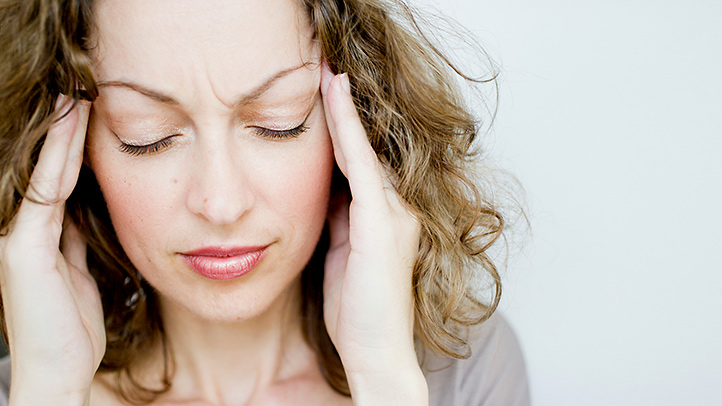Library
Subscribe
Relief from The Misery of Migraines
Published on Thu May 9, 2019 - 3 min read

Migraines
Nothing can put a good day into a headlock and dropkick you into misery as a migraine can. Migraine sufferers will be quick to point out that a migraine is different than “just a headache.” With a migraine everything hurts – taking a shower, brushing your hair, even sunlight. Many migraine sufferers also have stabbing eye pain, a tingling scalp and face, brain fog, pinched nerve sensations and since migraines can paralyze the nerves of the digestive system, there can be difficulty swallowing, nausea, and even an inability to digest medications.
Surprisingly, migraine is the third most common disease in the world. Yes, migraines are more prevalent than diabetes, epilepsy, and asthma combined affecting about 37 million Americans1. Interestingly, for something so widespread and debilitating the definition of migraine is somewhat loose – partly because there are so many different types and symptoms. Generally, migraine is a tendency to have headaches with sensory disturbances. It’s an instability in the way the brain deals with incoming sensory information2.
Are there different types of migraine?
According to the International Headache Society, there are dozens of types and subtypes of migraine each classified by their different symptoms3. The two most prominent are “migraine with aura” and “migraine without aura.”4 Aura describes neurological visual disturbances such as blind spots, tunnel vision, sparkles, stars, and even temporary blindness. This type of migraine usually lasts less than an hour. Migraine without aura accounts for 90% of migraines and can last between four hours and three days!4
What causes Migraines?
There are many theories on the cause of migraines. Some say it is a problem with the blood vessels of the brain and others say it is a nerve malfunction. While the truth likely lies between both theories the result is always inflammation and immune system dysregulation in cranial nerves5. Indeed, the natural remedies we recommend treat both systems while addressing autoimmunity and inflammation.
What are common migraine triggers?
Anything that causes toxicity, stress, and inflammation in the nerves or brain can trigger a migraine. Common triggers include 1. Cheese. (because of the amino acid tyramine) 2. Wine and dried fruit. (because of sulfites) 3. Food additives such as artificial dyes, sweeteners, and MSG. 4. Sleep deprivation. 5. Chronic stress. 6. Dehydration. 7. Hormone imbalances and menstruation.
What are some of the best diet, lifestyle, and supplements tips for migraine suffers?
The bottom line is that you don’t have to continue to suffer through migraines with just conventional medications and side effects. Natural remedies along with diet and lifestyle changes are proving to be as effective or more effective than traditional medical interventions.
[References]
- https://www.ncbi.nlm.nih.gov/pmc/articles/PMC3606966/
- https://www.migrainetrust.org/about-migraine/migraine-what-is-it/more-than-just-a-headache/
- http://www.ihs-headache.org/ichd-guidelines
- https://www.ncbi.nlm.nih.gov/pmc/articles/PMC3451821/
- https://www.hindawi.com/journals/bmri/2015/574186/
- https://americanmigrainefoundation.org/resource-library/sleep-insomnia-migraine/
- https://www.ncbi.nlm.nih.gov/pmc/articles/PMC5036209/
- https://link.springer.com/article/10.1007%2Fs00702-012-0790-2
- https://www.ncbi.nlm.nih.gov/pmc/articles/PMC4586582/
- https://www.ncbi.nlm.nih.gov/pubmed/29932030
- https://www.ncbi.nlm.nih.gov/pmc/articles/PMC3096178/
- https://www.ncbi.nlm.nih.gov/pubmed/15728298
- https://www.ncbi.nlm.nih.gov/pmc/articles/PMC4359851/
- https://www.ncbi.nlm.nih.gov/pubmed/15623680
- https://www.ncbi.nlm.nih.gov/pubmed/11799030
- https://www.ncbi.nlm.nih.gov/pmc/articles/PMC4005924/
- https://www.ncbi.nlm.nih.gov/pubmed/10779289
- https://www.ncbi.nlm.nih.gov/pubmed/26242570
- https://www.medicalnewstoday.com/articles/322543.php
- https://www.ncbi.nlm.nih.gov/pubmed/21378060
- https://www.sciencedirect.com/science/article/pii/S0168160597001098
Published By:
 Bryan Bradford
Bryan Bradford